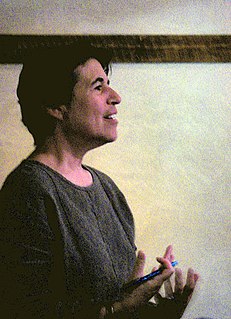A Quote by Gary Snyder
In the belly of the furnace of creativity is a sexual fire; the flames twine about each other in fear and delight. The same sort of coiling, at a cooler, slower pace, is what the life of this planet looks like. The enormous spirals of typhoons, the twists and turns of mountain ranges and gorges, the waves and the deep ocean currents - a dragonlike writhing.
Related Quotes
Do not try to correct the mind. Trying to correct the mind is like trying to correct the waves in the ocean. Can you stop the waves in the ocean? If you want to see an ocean without waves you only have to dive deeper. When you dive deep inside you will experience the stillness of the ocean. And if it is all frozen that is enlightenment.
Each person shines with his or her own light. No two flames are alike. There are big flames and little flames, flames of every color. Some people’s flames are so still they don’t even flicker in the wind, while others have wild flames that fill the air with sparks. Some foolish flames neither burn nor shed light, but others blaze with life so fiercely that you can’t look at them without blinking, and if you approach you shine in the fire.
Bad things are like waves. They're going to happen to you, and there's nothing you can do about it. They're part of life, like waves are a part of the ocean. If you're standing on the shoreline, you don't know when the waves are coming. But they'll come. You gotta make sure you get back to the surface, after every wave. That's all.
There's gonna be all the twists and turns you would expect and twists and turns you did not expect. The finale is probably the most jam-packed episode there's ever been. Things are packed into it like sardines. All of the life is squeezed in there. They lengthened it to 90 minutes because there's just so much. It's a supersized monstrosity.
I wonder if I don't give too much of myself to writing: I am always half where I am; the other half is feeding the furnace, kick-starting the heat of creativity. I am making love with someone but at the same time I'm noticing how this graceful hand across my belly might just fit in with the memory of lilacs in Albuquerque in 1974.







































